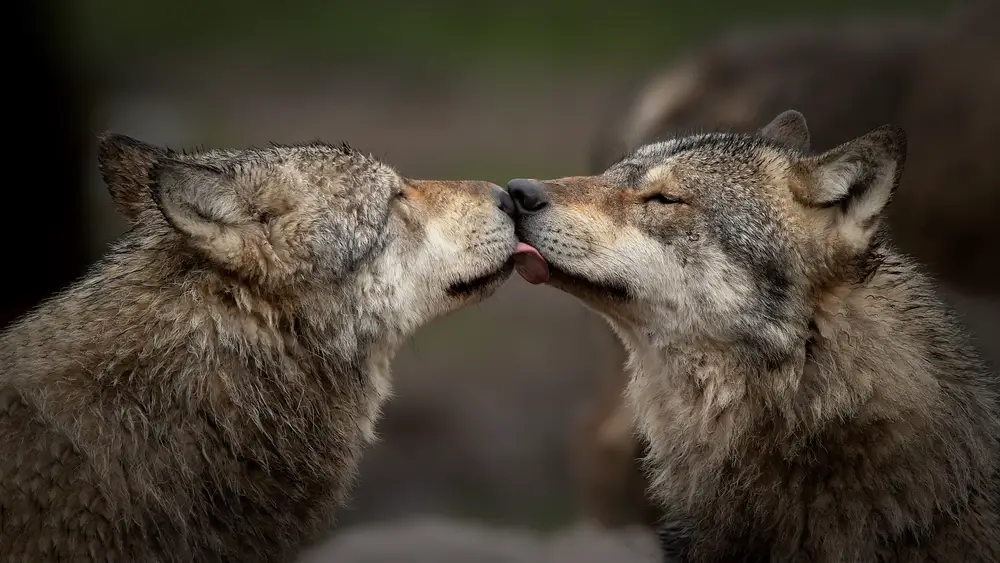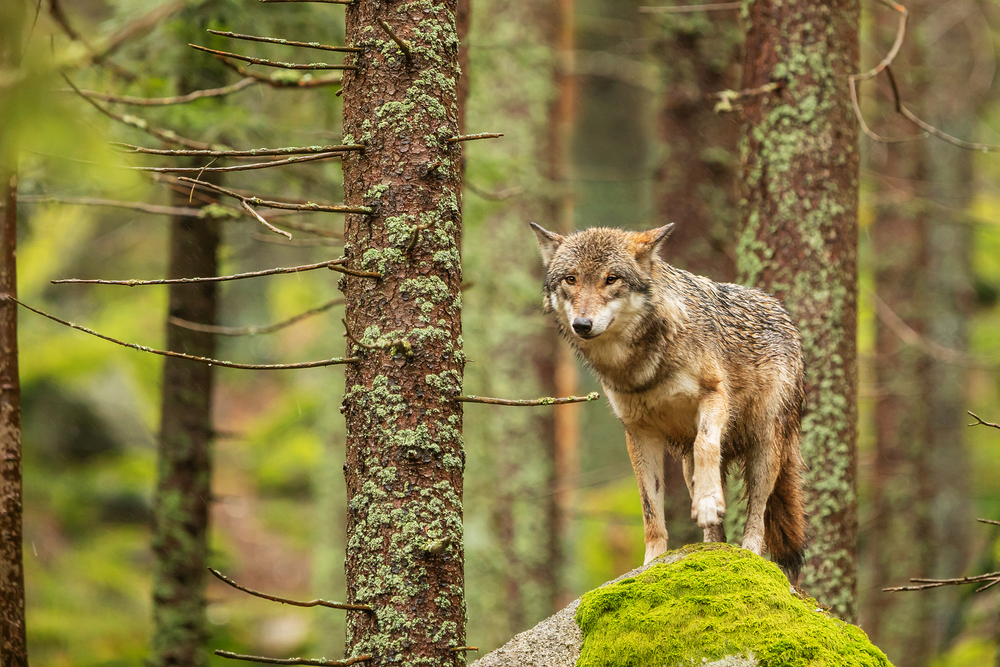Historically, there were two types of wolves in Kentucky – the gray wolf and the red wolf. However, over the years both of these wolves declined in numbers within Kentucky, and now neither type can be found in Kentucky again.
So, the answer to this question is a resounding no, there are no wolves in Kentucky.
However, there used to be wolves found in Kentucky. So, let’s take a look into these wolves and what happened to make them leave Kentucky.
Gray Wolves
Gray wolves (Canis lupus) measure between 24 and 35 inches from the shoulder, and they can weigh between 50 and 175 pounds. This wide weight range clearly shows that the gray wolves are the largest of the wild canine species.
Gray wolves live in packs of around five to nine, although this number can vary depending on the number of offspring that the parent wolves have.
The dominant pair of wolves are the parents, and the rest of the wolves are their offspring that haven’t broken away yet to make their own packs.
This type of wolf hunts with the rest of its pack members, primarily going for large animals such as elk and bison. However, when food sources are scarce, they will also look for smaller animals to hunt.
Red Wolves
Red wolves (Canis rufus) are closely related to gray wolves. However, they can easily be differentiated by their smaller size and rusty red pelage. The difference in color is most clear in the wintertime during the cold weather.

Red wolves will also live in packs, with one dominating pair and their offspring. They will communicate with each other through their body language, vocalizations, pheromones, and physical touch.
This type of wolf will not measure more than 31 inches at the shoulder and therefore will go for smaller prey than the gray wolf, such as rabbits and raccoons. They might also join together to hunt slightly larger animals such as small deer.
Wolves in Kentucky
At the beginning of the 1800s, gray wolves were found all over the United States in large numbers. However, humans found them threatening and thought that wolves would kill and eat (see also our article: What Do Wolves Eat: A Complete List) their livestock, as well as pose a threat to human life.
This is now known not to be true, as wolves will only attack humans when they feel like they are under attack. Programs were put in place to trap, hunt, and kill the wolves to avoid them hurting humans first.
By the early 1900s, wolves were no longer found within Kentucky. Or the rest of the United States for that matter, with only 3% of their original population still alive.
Similar to the gray wolves, red wolves were also swiftly hunted upon sight and were shown no mercy. By the 1980s, red wolves were declared extinct in the wild.
Conserving wolves
Not everyone was happy with the way that wolves were being treated in the United States at this time, and conservation groups were created in order to protect both the gray wolf and red wolf species.
By the 1960s, gray wolves were protected federally under the precursor to the Endangered Species Act. This helped gray wolves from going extinct like the red wolves, but it did not stop everyone from hunting them.
People still hunt gray wolves today, despite the protection the animal is under. This is true for a lot of animals, but more work needs to be done to prevent the gray wolf from becoming extinct.
Now, there are around 5,000 gray wolves in the wild in the United States and researchers doubt that this number will ever increase to what it once was. Due to the lack of gray wolves in the US, it’s unlikely that they’ll never be reintroduced to Kentucky.
Despite the fact that red wolves are extinct in the wild, a number of the wolves were kept in captivity in a bid to save the species. These were bred and reintroduced into the wild following a breeding program in 1987.
At the time of writing this, only one true wild population of red wolves exists in North Carolina. It is hoped that these wolves will breed and repopulate their species to some extent.
Why won’t wolves return to Kentucky?
Wolves don’t like to be around humans and they will populate areas that are far away from human life. Despite this, wolves like to take extremely large amounts of land as their territory, leaving them with not much choice in Kentucky.
When wolves were first hunted and killed in the 1800s, there was a lot more free land in Kentucky for wolves to claim as their own. However, now the area has been built upon and a lot of deforestation has taken place.
This leaves Kentucky as a subpar place for wolves to inhabit.


